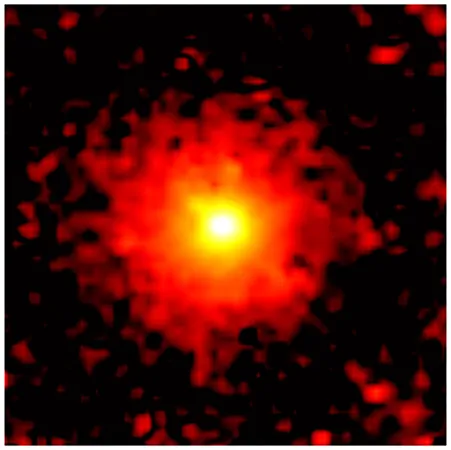
NASA's Powerhouses Uncover Secrets of Comet 3I/ATLAS: Water and CO2 Found!
2025-08-26
Author: Yu
Time is running out to catch a glimpse of comet 3I/ATLAS, the interstellar wanderer that’s gracing our Solar System with its presence!
Discovered on July 1, 2025, by the NASA-funded ATLAS survey telescope in Chile, this comet flies past Earth at a safe distance of at least 240 million kilometers (150 million miles). Thankfully, it’s no threat to our planet. But this icy relic from the depths of space is only passing through, set to sail away into the cosmos.
In an exciting race against time, astronomers are turning to some of the most powerful telescopes to unearth the mysteries surrounding this celestial visitor before it vanishes for good.
An Unprecedented Interstellar Encounter
3I/ATLAS is among the rare trio of known interstellar objects seen in our solar neighborhood—preceded by the likes of 1I/'Oumuamua in 2017 and 2I/Borisov in 2019. Having already captured the attention of the Hubble Space Telescope and Gemini North Telescope, the comet has now revealed even more of its secrets thanks to observations from NASA’s SPHEREx and the legendary James Webb Space Telescope.
SPHEREx Analysis: Unveiling the Comet's Composition
Between August 7 and 15, 2025, NASA’s SPHEREx (Spectro-Photometer for the History of the Universe, Epoch of Reionization and Ices Explorer) trained its sights on 3I/ATLAS. The results? An incredible glimpse into the comet’s chemical makeup! SPHEREx successfully conducted "multi-spectral observations," analyzing the light emitted by the comet to reveal a significant presence of carbon dioxide in its 'coma'—the protective gas envelope surrounding the nucleus. Remarkably, SPHEREx also detected water ice sitting within the comet’s core.
Webb's Spectacular Discovery
Not to be outdone, the James Webb Space Telescope made its observations on August 6, 2025. Utilizing its sophisticated Near-Infrared Spectrograph, Webb confirmed SPHEREx’s findings: 3I/ATLAS is not only rich in carbon dioxide, but also contains a treasure trove of water ice, water vapor, carbon monoxide, and carbonyl sulfide. This wealth of information opens new doors to understanding these cosmic visitors.
What’s Next for 3I/ATLAS?
The comet remains visible until late September 2025, but it won't be long before it dips too close to the Sun to be seen from our vantage point. Fear not—3I/ATLAS will make a triumphant reappearance from behind the Sun's glare in December 2025 on its continued journey across our solar neighborhood. Scientists are racing against the clock to gather as much knowledge about this fascinating entity before it slips away into the vast expanse of the universe.
As researchers utilize every tool at their disposal to decode the comet's composition, each detail they uncover enriches our understanding of the cosmos, reminding us how much there is still to learn about the universe we inhabit!


 Brasil (PT)
Brasil (PT)
 Canada (EN)
Canada (EN)
 Chile (ES)
Chile (ES)
 Česko (CS)
Česko (CS)
 대한민국 (KO)
대한민국 (KO)
 España (ES)
España (ES)
 France (FR)
France (FR)
 Hong Kong (EN)
Hong Kong (EN)
 Italia (IT)
Italia (IT)
 日本 (JA)
日本 (JA)
 Magyarország (HU)
Magyarország (HU)
 Norge (NO)
Norge (NO)
 Polska (PL)
Polska (PL)
 Schweiz (DE)
Schweiz (DE)
 Singapore (EN)
Singapore (EN)
 Sverige (SV)
Sverige (SV)
 Suomi (FI)
Suomi (FI)
 Türkiye (TR)
Türkiye (TR)
 الإمارات العربية المتحدة (AR)
الإمارات العربية المتحدة (AR)